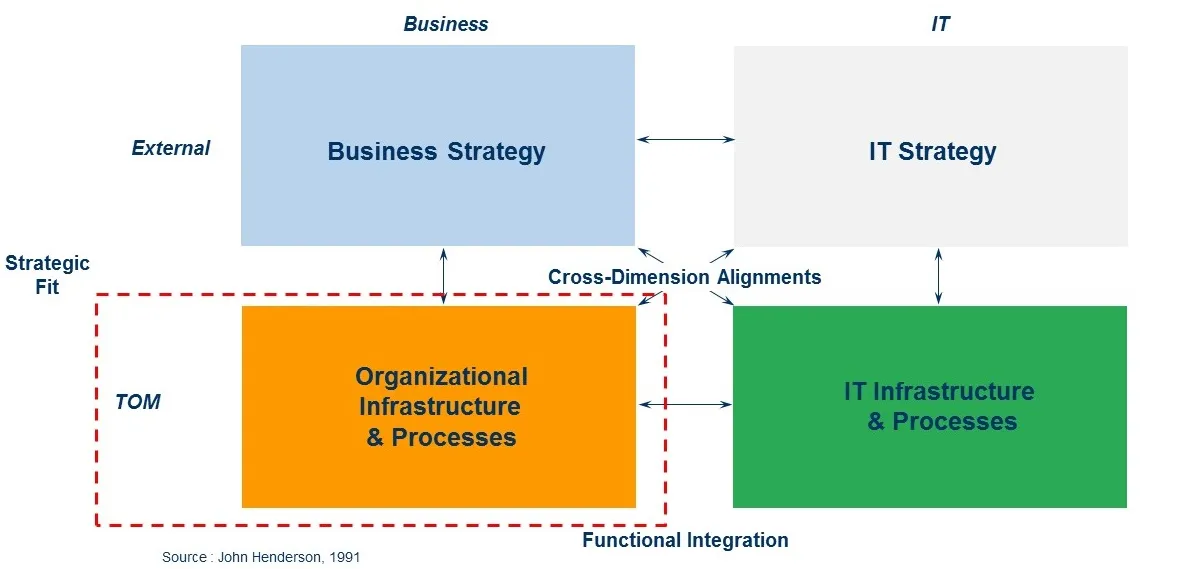Is a TOM and an Org Chart the same thing?
Blog: Capgemini CTO Blog
For many IT / Infrastructure organisations speed and quality is key. And in order to speed up, whilst improving quality many have to (completely) reorganise, aligning much closer with business stakeholders and peers whilst transforming along a supply / value chain. For many the route to the praised DevOps land is via a target operating model (TOM), trying to understand the changes needed to infuse speed and quality. Unfortunately, many struggle to get off the starting line due to a skewed view on what a TOM actually is.
A TOM is the conceptual structure of the functions, the roles and the activities executed by roles. It is focusing on the “what” question and is implementation independent – i.e. it not the same as an organisational structure. A organisational structure is the implementation of one scenario of the logical structure of the functions, the roles, the activities executed by roles. It is focusing on the “how” question and is structuring the implementation – i.e. it is the logical implementation of the TOM.
Only once you place names, physical locations etc. will you articulate an “organisational structure”. Typically the key is to create the “what” separate from the “how” to use different scenarios (or grouping criteria) to establish the organisational structure. The TOM is the “what” and the Organisational (Org) Chart is the “how” and “with whom” and finding the “with whom” has to follow a iterative approach and has to start with the “what”.
And a TOM does not live in isolation; any organisation wanting / needing to transform has to change its IT system/solutions alongside the organisational changes. Both will be driven by the business and IT strategy and a successful TOM will have to be cognisant of all 3 areas : people, process and tools (technology)
When starting to define a target operating model for a DevOps based and infrastructure focused organisation, you should take external standards into account. One of these standards is the IT4IT framework defined by The Open Group.
As many infrastructure organisations follow a tower based structure – so follow server, data centre, network, storage etc setup – one of the key changes a DevOps approach will bring is the alignment with a supply chain approach. In other words to move from a business disconnected tower based setup to a setup that follows a “business engagement, design, build and operate” structure.
As per [1] The Open Group has developed significant amount of material (IT4IT Reference Architecture) that provides much more content and context, helping organisations defining and detailing its TOM.
Thanks for Reading.
About the Author: Gunnar Menzel has been an IT professional for over 29 years and is VP and Chief Architect Officer for Capgemini’s Cloud Infrastructure Business. His main focus is business – enabling technology transformation & innovation.
References: [1] The Open Group IT4IT
